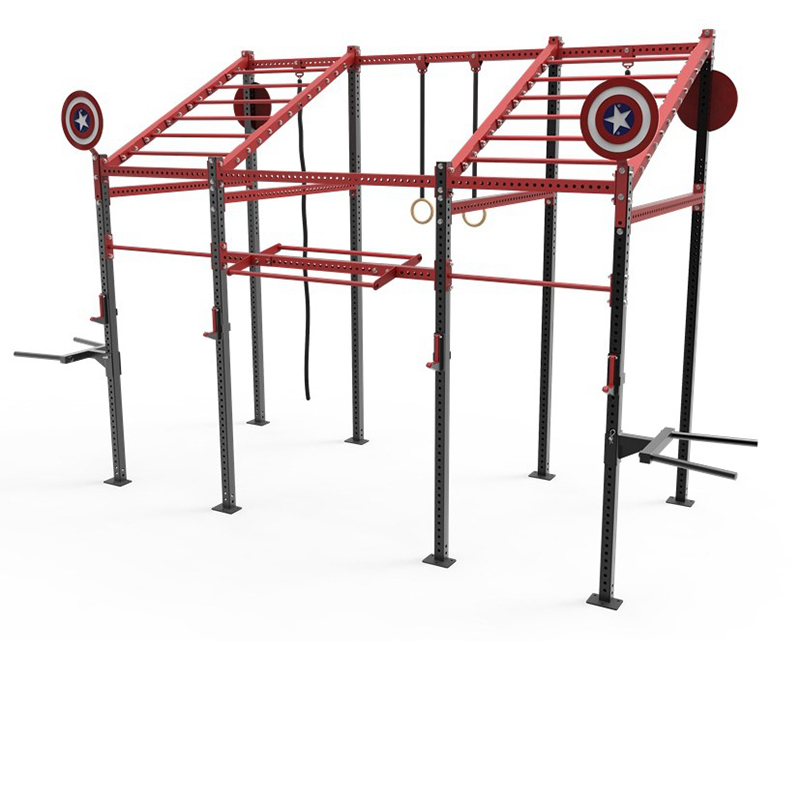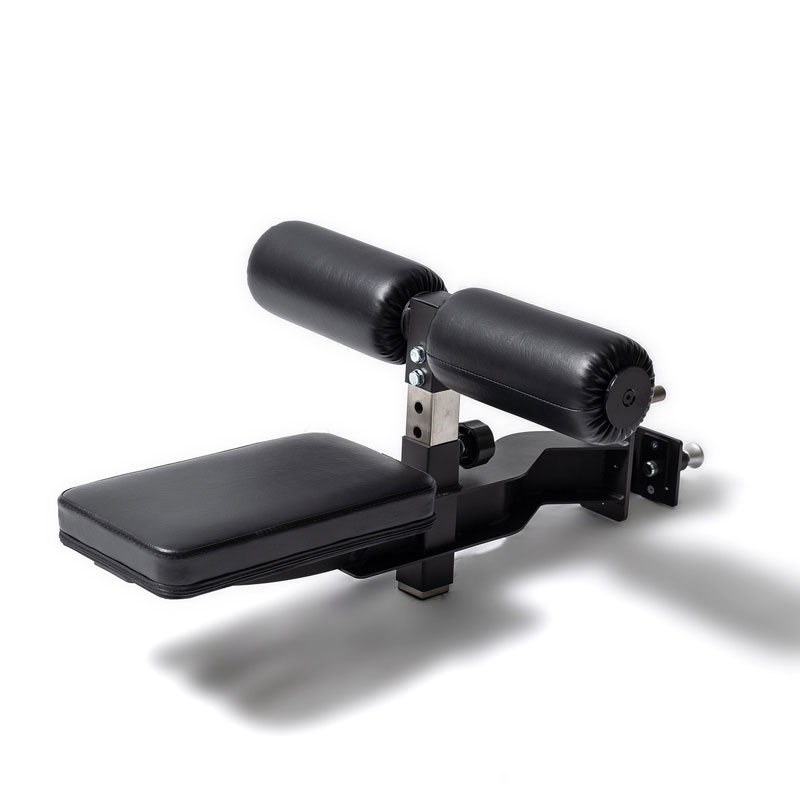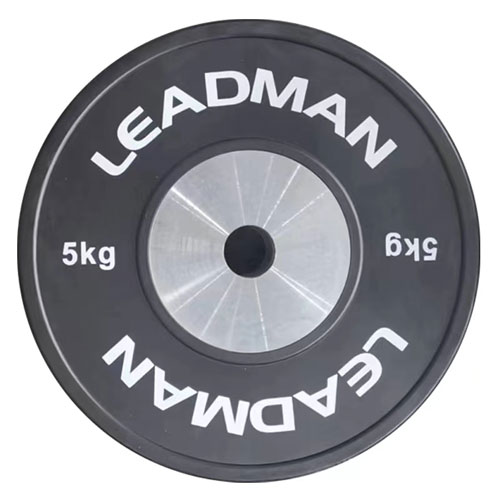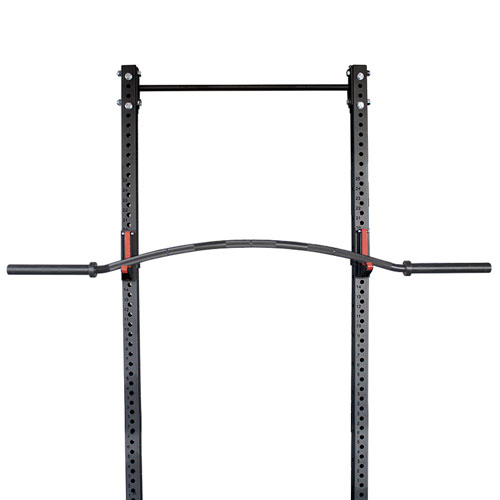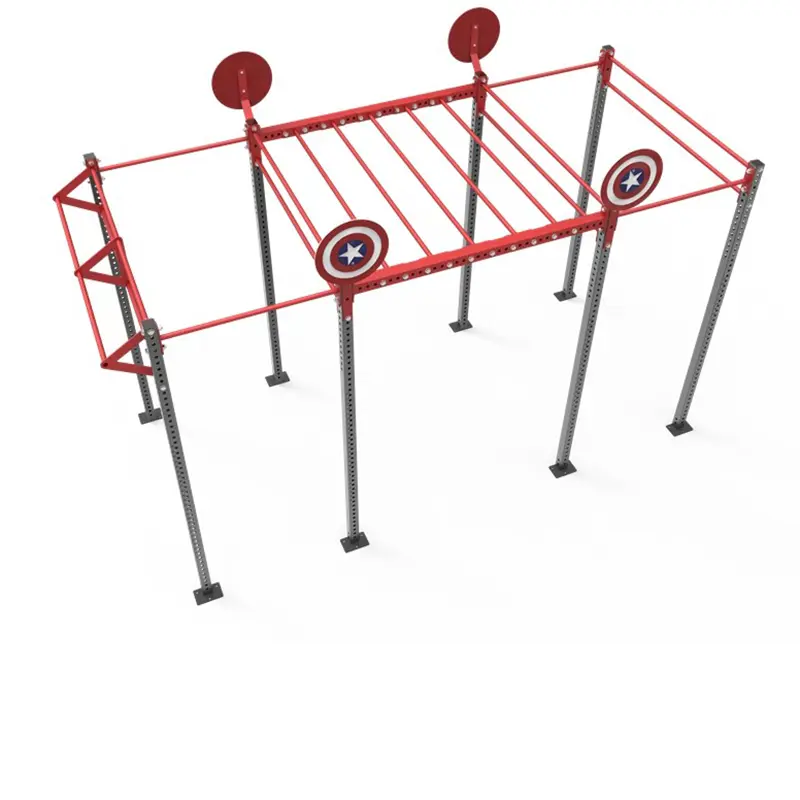Pehea ka nui o ka hoʻohana ʻana i kahi moena ma lalo o kahi pae kaumaha
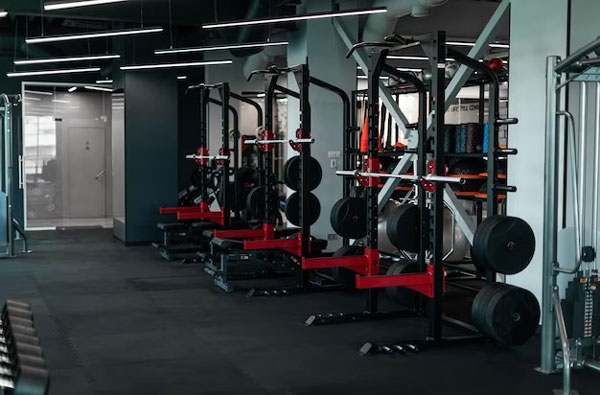
Imagine this: You're finally setting up your dream home gym, meticulously choosing weights, a sturdy weight bench, and… a gaping hole in your plan. That nagging feeling in the pit of your stomach telling you something's missing? It might be a mat. The creaking of your hardwood floors as you lower that heavy barbell, the worried glance at your expensive Persian rug, or the impending dread of a neighbor's noise complaint – these are all scenarios that highlight the importance of considering a mat for your weight bench. So, the core question: Is a mat necessary under a weight bench? The answer, as we'll explore, is nuanced. A mat under a weight bench isn't always essential, but offers significant benefits depending on your situation and priorities. This guide will help you determine if a mat is a crucial investment or an optional extra.
Palekana i kou mau papahele: pale ʻana i ka pōʻino nui
Your flooring is a significant investment, and damage from a weight bench can be surprisingly extensive and expensive to repair. The type of flooring you have drastically affects its vulnerability.
- lāʻau paʻa: Prone to scratches, dents, and indentations from dropped weights or the constant pressure of the bench's legs. Repairs can involve costly sanding, refinishing, or even replacing entire planks.
- Kāpena: While seemingly more forgiving, heavy weights can flatten the pile, creating permanent indentations. Moisture from sweat can also seep into the padding, leading to mildew and unpleasant odors.
- Tile:ʻOi aku ka maʻalahi, akā hiki i nā paona hāʻule ke ʻoki a ʻāhaʻi paha i nā tile, e hopena ai i nā pani pani.
- Paʻakū:ʻO ka mea ʻoi loa ke kūpaʻa, akā hiki ke ʻeha i ka ʻili a me ka indentation i ka manawa, ʻoi aku hoʻi me nā mea kaumaha.
A simple mat can act as a buffer, absorbing impact and preventing these costly damages. Imagine replacing a damaged hardwood floor: the labor, material costs, and disruption to your home can easily run into hundreds, even thousands, of dollars. A preventative mat, on the other hand, costs a fraction of that and offers long-term protection.
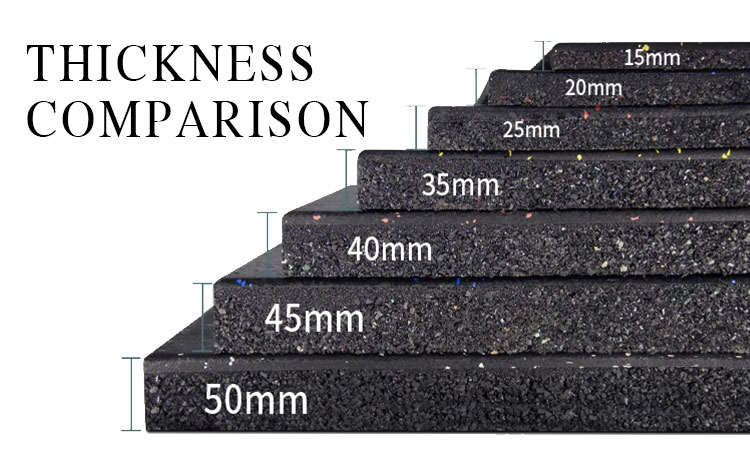
Reducing Noise and Vibration: A Harmonious Home Gym
ʻO ka haʻi kaumaha e hoʻopuka i ka walaʻau a me nā haʻalulu, ʻoi aku me nā mea kaumaha a me ka hoʻomaʻamaʻa ikaika. Hiki ke hoʻopilikia i kou ʻohana a me kou mau hoalauna ʻo ke kani ʻana o nā mea kaupaona, ke ʻoki ʻana i ke metala, a me nā haʻalulu e hele ana ma kāu papahele.
Repeated loud noises can lead to friction with roommates or neighbours, potentially escalating into complaints or even legal issues. A thick, well-designed mat significantly reduces noise and vibrations. Materials like rubber and high-density foam are particularly effective at absorbing impact sound.
Consider the scenario of living in an apartment building. The sounds of your workout, amplified by the building's structure, can travel easily to neighbouring units. A mat can be the difference between maintaining harmonious relationships with your neighbours and facing complaints or conflicts.
Hoʻonui i ka Paʻa a me ka Palekana: ʻO kahi ʻoihana palekana
A mat doesn't just protect your floors; it also enhances the stability and safety of your weight bench. Uneven surfaces can cause the bench to wobble, increasing the risk of accidents. A mat provides a level, stable base, preventing slippage and ensuring a secure workout. This is especially important during demanding exercises like bench presses or overhead presses, where stability is paramount to avoid injury.
A stable bench reduces the chance of the bench shifting during heavy lifts, minimizing the risk of dropped weights or injuries. The increased safety benefits not only the user but also protects the surrounding environment from damage caused by accidental weight drops.
Nā ʻano moena no nā pae paona: ʻImi i ke kūpono kūpono
The market offers a variety of mats specifically designed for weightlifting. Choosing the right one depends on your needs and budget.
- Moena ʻōhua:Maikaʻi a maʻalahi hoʻi, hāʻawi kēia i ka cushioning maikaʻi a me ka hoʻohaʻahaʻa leo. Eia nō naʻe, ʻoi aku ka liʻiliʻi o ka lōʻihi ma mua o nā koho ʻē aʻe a hiki ke hoʻopaʻa i ka manawa.
- Moena Rubber: More durable and provide superior shock absorption and noise dampening. They're more expensive but offer long-term value.
- Moena Puzzle: Interlocking tiles that can be customized to fit any space. Easy to clean and replace individual tiles if damaged. However, the seams can be a tripping hazard.
- Moena yoga: Generally thinner and less durable than dedicated weightlifting mats. Suitable for lighter weight training but not ideal for heavy lifting.
Consider the size and thickness of the mat. It should extend beyond the base of the weight bench to provide adequate protection and stability. Thicker mats (at least ½ inch to 1 inch) offer better cushioning and noise reduction.
(Hoʻohui i nā loulou i nā moena i manaʻo ʻia ma Amazon a i ʻole nā mea kūʻai aku ma aneʻi.)
When a Mat is Absolutely Necessary: Non-Negotiable Situations
I kekahi mau kūlana, ʻaʻole ʻōlelo wale ʻia ka moena; he mea pono loa.
- Noho hale:ʻO ka hiki ke hoʻopiʻi i ka walaʻau a me ka pōʻino o ka papahele e pono ai ka moena.
- Nā papahele maalea: Hardwood, parquet, or tiled floors require extra protection. The risk of irreversible damage far outweighs the cost of a mat.
- Nā Hale Hōʻikeʻike Upper:Hoʻonui ʻia ka hopena o nā paona ma nā papahele o luna, e ʻoi aku ka koʻikoʻi o ka hoʻemi ʻana i ka walaʻau.
ʻO ka hoʻohana ʻole ʻana i ka moena i kēia mau kūlana hiki ke alakaʻi i ka hoʻoponopono ʻana i ke kumu kūʻai, pilikia ka pilina me nā hoalauna, a i ʻole nā hoʻopaʻapaʻa kānāwai.
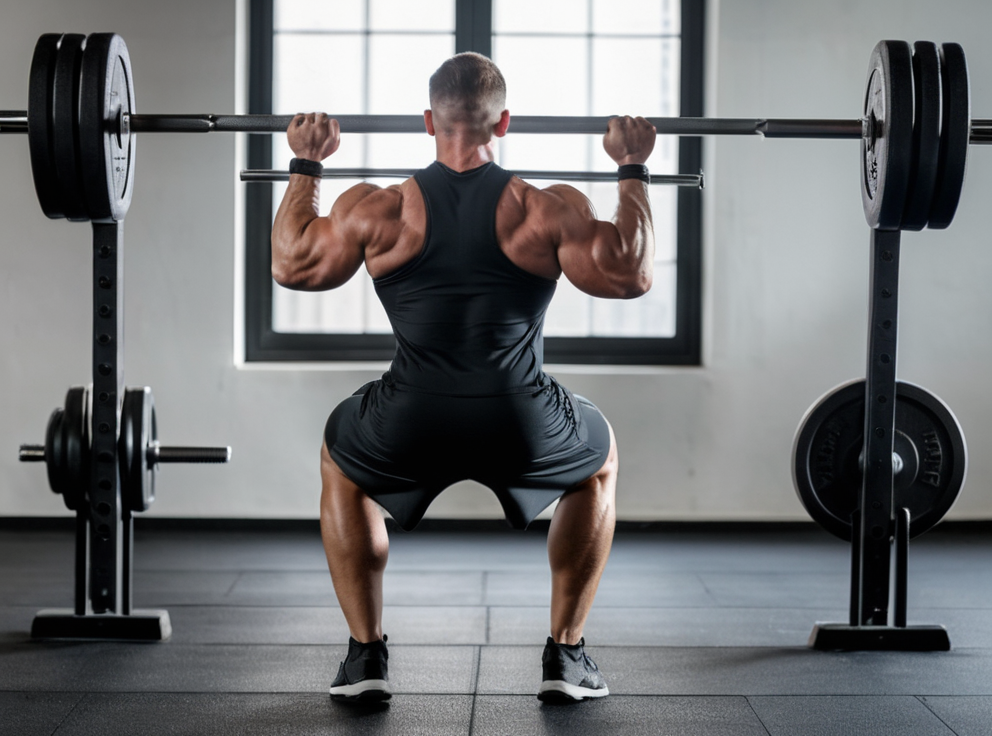
When a Mat Might Be Optional: Weighing the Costs and Benefits
I kekahi mau hiʻohiʻona, ʻaʻole koʻikoʻi ka pono o ka moena.
- Nā Papa Paʻa:Kūpaʻa maoli ka paʻakai i ka pōʻino, ʻaʻole pono ka moena. Eia nō naʻe, hiki i ka moena ke hoʻomaikaʻi i ka paʻa a hoʻemi i ka walaʻau.
- Nā hale kaʻa:ʻO ke kaiapuni o ka hale kaʻa ka mea maʻamau e kala ʻia, a hoʻemi ʻia ka hiki ke hōʻino.
- Nā lumi hoʻomaʻamaʻa i hoʻolaʻa ʻia me ka papahele kūpaʻa:Inā loaʻa iā ʻoe kahi lumi hoʻomaʻamaʻa i hoʻolaʻa ʻia me ka lāʻau a i ʻole ka papahele like ʻole i hoʻokomo mua ʻia, hiki ke hoʻonui ʻia ka moena.
In these situations, a cost-benefit analysis is appropriate. Weigh the price of a mat against the potential risks of damage or noise complaints. If the risks are minimal, a mat might be an optional expense.
Alternatives to Mats: Exploring Other Options
ʻOiai ʻo ka moena ka hopena maʻamau, aia nā koho ʻē aʻe.
- Plywood: A sheet of plywood can provide a solid, level base for the weight bench. However, it offers no cushioning or noise reduction.
- Kāpena Kaumaha:Hiki ke hāʻawi i kahi ʻeke mānoanoa i kahi pale akā hiki ke hōʻike i nā indentations i ka manawa.
ʻAʻole maʻalahi a maikaʻi kēia mau koho ʻē aʻe ma mua o nā moena hāpai kaumaha i hoʻolaʻa ʻia, nele i ka cushioning, hoʻemi ʻana i ka walaʻau, a me nā pono kūpaʻa.
Ka Hopena: Ke Koho Pono
A mat under a weight bench offers multiple benefits: floor protection, noise reduction, enhanced stability, and increased safety. Whether or not it’s necessary depends on your specific circumstances. Consider your flooring type, your living situation, the intensity of your workouts, and your budget. If you're in an apartment, have delicate floors, or are prone to dropping weights, a mat is virtually non-negotiable. If you have resilient flooring and a dedicated workout space, it becomes a more optional, though still beneficial, investment. Prioritize safety and consider the long-term cost of potential damage against the relatively low cost of a protective mat.
Mahele Bonus: DIY Mat Solutions
For the budget-conscious, consider repurposing thick rubber sheets, interlocking foam tiles, or even using multiple layers of cardboard or heavy-duty padding for a more economical, albeit less aesthetically pleasing, solution. Remember, safety and effectiveness are paramount regardless of your chosen method.
FAQ e pili ana i ka hoʻohana ʻana i ka moena ma lalo o kahi pae kaumaha
1. No ke aha au e hoʻohana ai i ka moena ma lalo o koʻu paepae kaumaha?
ʻO ka hoʻohana ʻana i ka moena ma lalo o kou noho paona e pale ai i kou papahele mai nā ʻōpala, nā niho, a me nā pōʻino ʻē aʻe i hana ʻia e ke kaumaha kaumaha a i ʻole ke kaomi mau. Hoʻemi pū ia i ka walaʻau, pale i nā haʻalulu, a hāʻawi i kahi kumu paʻa, e hōʻoiaʻiʻo ana i kahi ʻoihana palekana.
2. Hiki iaʻu ke hoʻohana i kekahi moena ma lalo o koʻu paepae kaumaha, a i ʻole makemake au i kahi moena?
ʻOiai hiki i kekahi moena ke hāʻawi i kahi pale, ʻo kahi moena i hoʻolālā ʻia no ka hāpai ʻana i ke kaumaha. ʻO nā moena Rubber a i ʻole nā moena puʻupuʻu kiʻekiʻe e hāʻawi i ka ʻoi aku ka maikaʻi o ka haʻalulu, ka hoʻohaʻahaʻa ʻana i ka walaʻau, a me ke kūpaʻa i hoʻohālikelike ʻia me nā moena hale maʻamau.
3. Pono au i ka moena inā loaʻa iaʻu nā papahele sika?
ʻAʻole hiki ke ʻino nā papahele paʻa, akā ʻo ka hoʻohana ʻana i ka moena e hāʻawi mau ana i nā pōmaikaʻi. Kōkua ia i ka hoʻohaʻahaʻa ʻana i ka walaʻau, hoʻomaikaʻi i ke kūpaʻa o kou noho paona, a hoʻohui i kahi cushioning hou no kahi ʻoihana ʻoluʻolu a palekana.
4. Pehea wau e koho ai i ka moena kūpono no koʻu pae kaumaha?
E noʻonoʻo i nā mea e like me ka lōʻihi, ka mānoanoa, a me nā mea. Paʻa loa ka moena Rubber a maikaʻi i ka hoʻohaʻahaʻa leo. ʻO ka mānoanoa o ka liʻiliʻi o ½ iniha a 1 ʻīniha e hāʻawi i ka cushioning ʻoi aku ka maikaʻi a me ka paʻa. E hōʻoia i ka nui o ka moena e uhi i ka ʻāpana holoʻokoʻa ma lalo o ka pae kaumaha.

